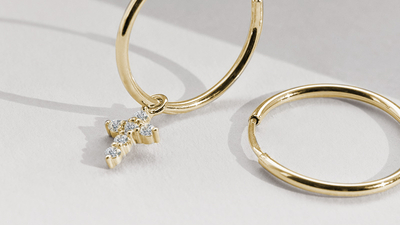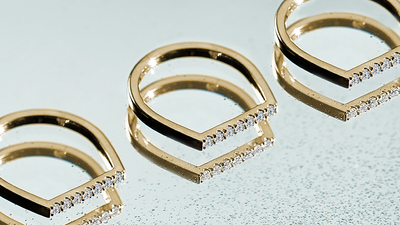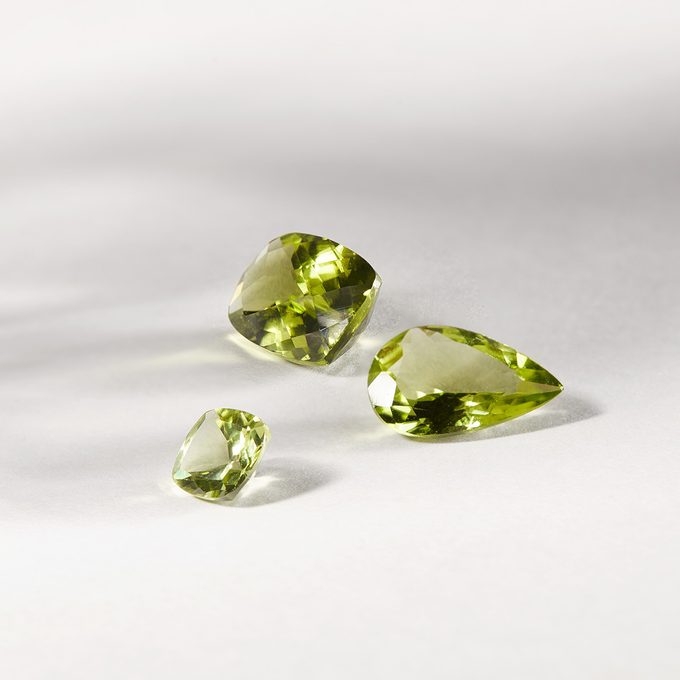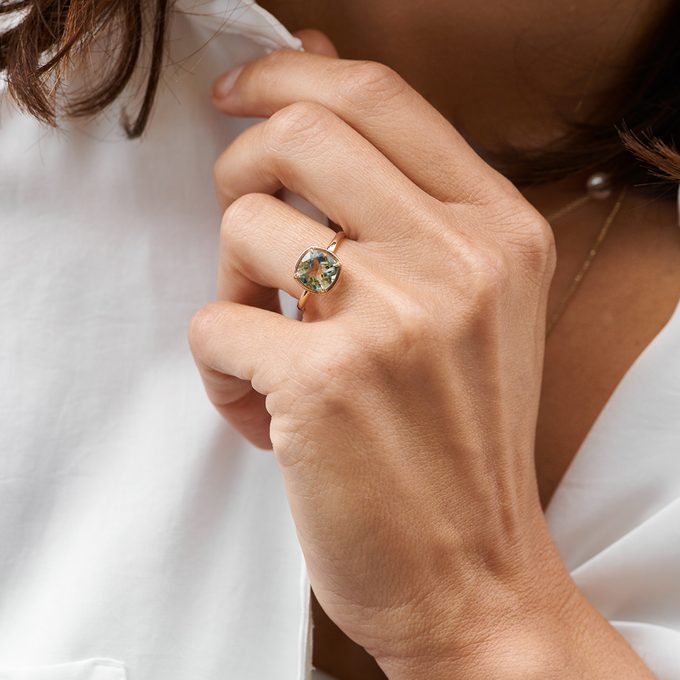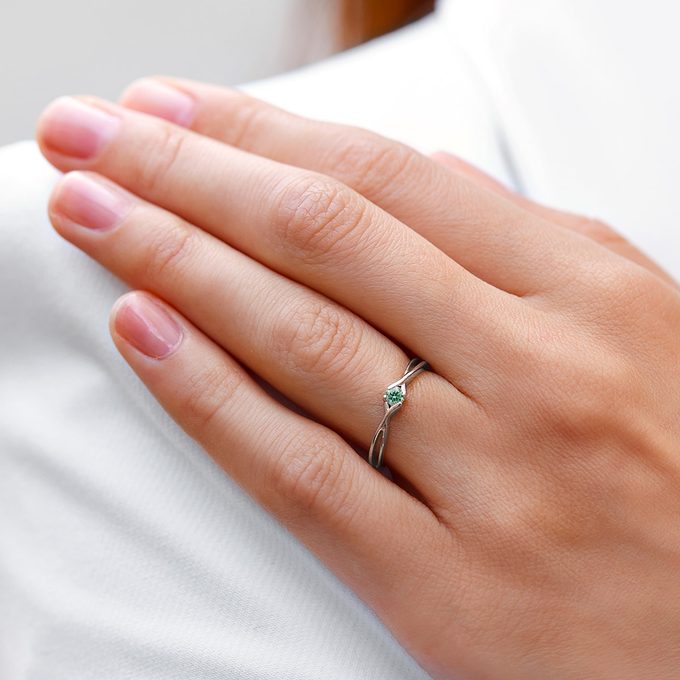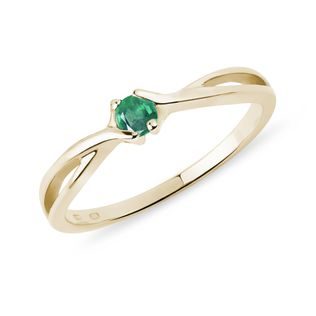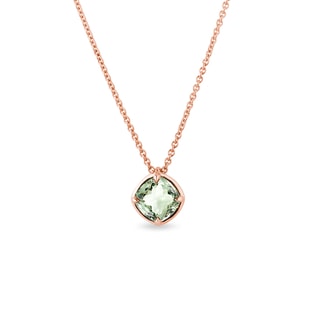The color green is positively charged with symbolism. It is the color of safety, it means "go" at the traffic light, and we often say "to give something the green light". It is the most widespread color on Earth. As a result, the human eye reacts the most sensitively to it out of all colors. In the psychology of color, it represents life, energy, youth, spring and hope.
When it comes to fashion and accessories, green has one big advantage: its wide range of shades incorporates both warm and cold shades. It therefore suits almost everyone - just choose the right shade. Cold types suit pea, olive and khaki. Warm types should favor greenish-yellow hues.
Green gemstones
Under the definition of a green gemstone, the majority of people most likely think of emerald, one of the most valuable minerals in the world. However, Mother Nature has bestowed this color on many more types of stones and some of them are used in jewelry more and more often.
Every green gemstone is special for some reason. But one quality – beauty - belongs to all of them. Whether a jewel is decorated with a delicate green amethyst, refreshing olivine, noble emerald, or mysterious moldavite, their addition creates a distinctive, elegant accessory that catches the eye. Let's take a closer look at six green stones you will find in the KLENOTA jewelry collection.

Emerald: the stone of wisdom and prosperity
A stone valued and admired across various cultures since ancient times. Together with the ruby and sapphire, it makes up the so-called "big three" of the most valuable color gemstones. It probably got its name from the Greek word smaragdos, which means green stone. Emerald jewelry is traditionally given for the 20th and 35th wedding anniversaries. Combining a ring, earrings and a necklace creates a truly luxurious set of jewelry. Engagement rings with emeralds have also gained in popularity over recent years.
The first mention of emeralds is from Egypt and dates back to around 1500 BC. Cleopatra had a great weakness for them - she liked to decorate herself with them and to give them to her important guests. Throughout history, a variety of qualities have been attributed to emeralds. For example to the Romans, they symbolized love and beauty. They were also apparently meant to give their wearers the ability to see the truth and to strengthen their memory and intuition. However the quality of emeralds from ancient times was greatly surpassed by those from Colombia which were only discovered in the 16th century.
Along with pale blue aquamarine, the emerald belongs to a group known as beryls. It owes its green color to chromium and vanadium. Internal inclusions are characteristic for the emerald, which are usually tolerated for this stone. This is due to the fact that completely clear emeralds are extremely rare. Moreover, these little imperfections give each emerald a unique look.

Moldavite: the stone of intuition and health
Moldavite is a purely Czech gemstone which is found in several locations in the Moldau river basin. Its color varies from light to dark brown-green. It attracts attention not only for its beauty, but also for its story which has its roots deep in history. Moldavite was probably formed 15 million years ago as a result of the impact of a meteorite on Earth, when molten rock was expelled into the atmosphere. Some moldavite enthusiasts believe that these stones therefore hold cosmic energy.
Although moldavite was already known to the inhabitants of those lands in the Stone Age when it was used to produce work tools, it was officially introduced in 1787 by Professor Josef Meyer in the town of Týn nad Vltavou. It began to be frequently used as a stone in jewelry in the Art Nouveau period. It looks great especially when set in distinctive gold rings or earrings. A pendant with a moldavite has a more delicate feel to it.
Moldavite has an amorphous structure unlike the crystalline form of most other minerals. It is characterized by a wrinkled surface, also called sculptured and by tiny bubbles. The largest moldavite found comes from the surrounds of the town of Slavice and weighs 265.5 g.

Olivine: the stone of magical power and knowledge
Olivine, or peridot is perhaps the most prominent of all the green gems. It has a vivid green to yellow-green color. However, brown-green or even pure green pieces also exist. This is also the reason why olivine used to be mistaken for emerald quite often in the past. Its color is due to magnesium and iron.
The oldest known deposit of olivine was on St. John’s Island (Zabargad) in the Red Sea, where it was mined 3,500 years ago. This gemstone has always been associated with light. The Egyptians called it the "stone of the sun" for its warm color. It was apparently able to protect its wearer from the darkness. Its power could also be enhanced by gold. The richest deposits of olivine crystals are found in the USA, China, Vietnam, Finland, Pakistan and Myanmar. Olivine also has a past in our country where it is mined in the Kozákov region. On rare occasions, it is also found in meteorites.
Rings or earrings with olivine will be appreciated especially by women who like to be in the middle of the action and who enjoy being admired. And this is due to the fact that this gemstone simply cannot be overlooked.

Green amethyst: the stone of true love and Valentine's Day
This is a less common variety of the relatively well known purple gemstone. Green amethyst is also called prasiolite. This name is derived from two Greek words, prason (leek) and lithos (stone). From a geological point of view, prasiolite is a type of quartz, the same as purple amethyst, citrine, rose quartz or smoky quartz.
Green amethyst is characterized by a soft, greenish color in a cool shade which could also be described as menthol or mint green. It is especially well suited to being combined with diamonds and white gold, a combination which looks very subtle. Setting green amethyst in rose gold creates an altogether unique impression.
Green amethysts (or prasiolites as they are also known), which are used in jewelry making are created artificially by annealing (heating) natural purple amethysts. Only a few sites around the world in Brazil, Arizona and Poland have the necessary conditions which are suitable to the development of prasiolites. It is interesting to note that prasolites produced in a laboratory came on to the market sooner (around the middle of the 20th century) before natural green amethyst was discovered in Poland (1990).

Green diamond: the stone of energy and balance
The diamond is one of the few precious stones which is found in nature in all colors and its color varieties have been gaining in popularity in recent years. They are characterized by the same durability and toughness as the colorless varieties, and what’s more, they dazzle with beautiful color. As the perfect combination of tradition and originality, they are a great choice for an engagement ring.
Green diamonds are among the rarest. And they have an interesting story. Their color can be attributed to the radioactive radiation which occurred during their development over millions of years. However the diamond itself is no longer radioactive today, so there is no need to worry.
The largest and most famous green diamond is called Dresden Green, a natural 41 carat diamond with a subtle grey undertone. It comes from the Kollur mine in India. It was purchased by Frederick Augustus II of Saxony in 1741 and a few years later, it was combined with another 413 diamonds into a brooch, created by the jeweler Diessbach from Prague.
Tsavorite: the stone of positive thinking and success
The green variety of the grossular garnet is a relative novelty in jewelry making. Tsavorite was only discovered in 1967 in Tsavo National Park in Kenya, from which it also acquired its name. The main deposits of tsavorite are now found in Kenya, Tanzania, Pakistan, Canada and Sri Lanka.
Vanadium and chromium are responsible for the green color of tsavorite. From its color, it resembles an emerald, but as opposed to it, tsavorites have a more distinct lustre and are also more durable. This makes them perfectly suited to rings and other jewelry intended for everyday wear. A tsavorite will no doubt even impress fans of completely natural stones, as it is usually available on the market in a fantastic quality without any inclusions and it therefore does not need any further modifications.



